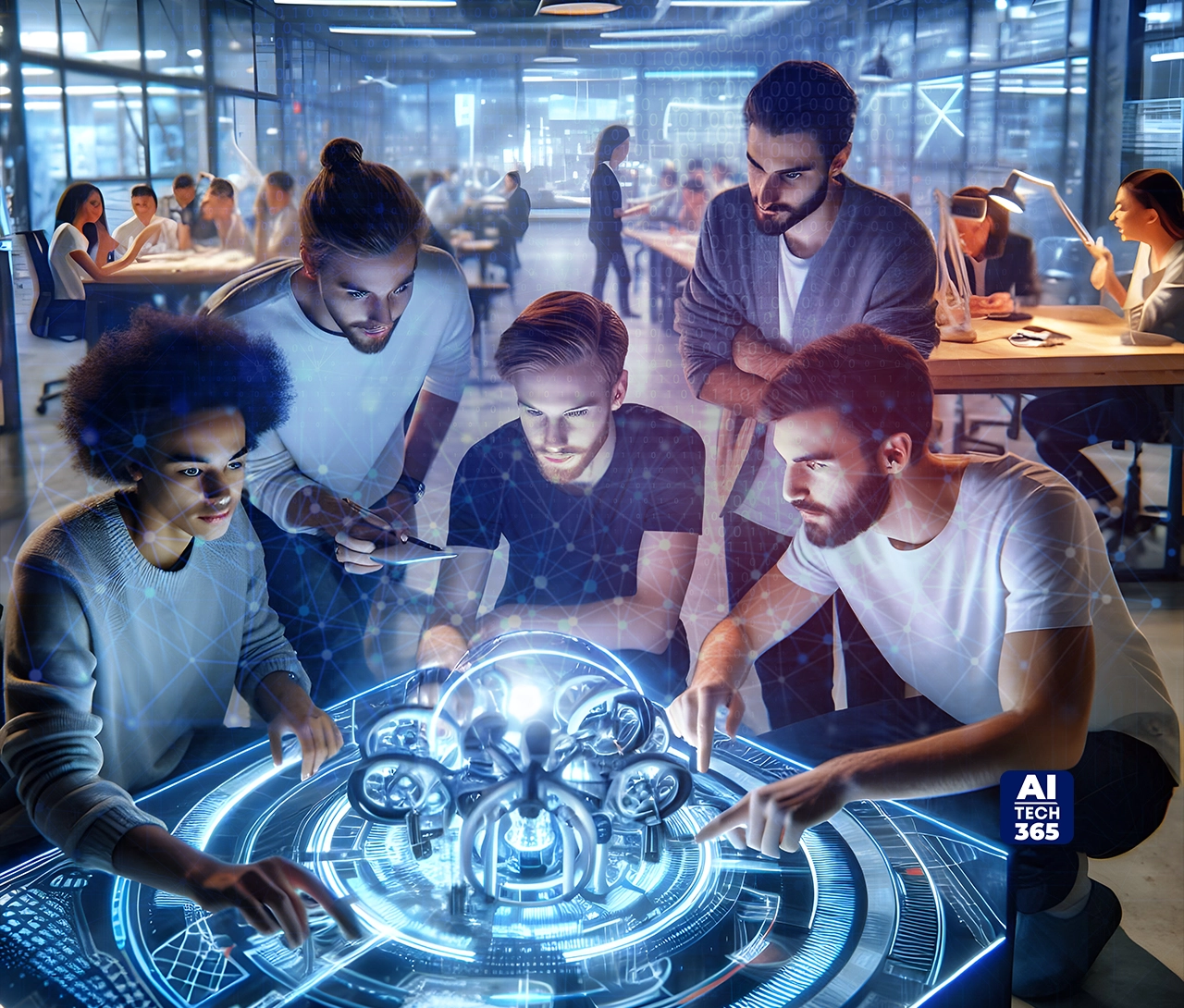If you talk to any creative or marketer today, the first thing you hear is how fast content needs to move. It is not a small bump. According to Adobe’s own survey, 96 percent of marketers said content demand has doubled in just two years, and 99 percent of creative professionals are already using AI just to keep up. That pressure cooker is what people now call the content velocity crisis.
This is where Adobe steps in with something bigger than a one off AI tool. The real play is a dual ecosystem that brings intelligence and generative power together in one flow. Sensei acts as the long standing brain that handles predictions, automation and audience understanding. Firefly steps in as the generative engine that actually builds the visuals, text and variations teams need at scale. When both work in sync, Adobe AI creativity becomes less about shortcuts and more about giving creators room to think again.
The Dual Engine for Understanding the AI Ecosystem
Adobe’s entire AI play works like a two engine machine. One thinks. The other creates. And once you see how they feed each other, the whole Adobe AI creativity story starts making sense instead of feeling like another buzzword parade.
Sensei sits at the intelligence layer. It looks at patterns, predicts what people want, and quietly trims the fat from all the manual work that slows teams down. Inside the Experience Cloud, it handles the unglamorous tasks that make everything else possible. Think tagging giant asset libraries, cropping visuals for every screen size, or pushing the next best offer to the right audience. Because of this, marketers spend less time guessing. Real Time CDP groups people with accuracy, and Journey Optimizer shapes the timing. Sensei becomes that clear voice in the room telling you what to create, who to target, and when to deliver.
Then Firefly enters like the creative copilot. It actually produces the stuff that brands put out into the world. Designers jump from idea to visual almost instantly with text to image. They tweak branding elements with text to vector. They fix scenes in seconds using Generative Fill in Photoshop or explore new palettes with Generative Recolor in Illustrator. Instead of getting stuck waiting for production cycles, teams move fast and test more ideas than ever.
Both engines get powerful when they talk to each other. Sensei reads performance data and learns which Firefly variants work best. Firefly then generates fresher, more on brand options based on those insights. And the loop keeps tightening. As a result, companies stop relying on slow approval chains and finally build content that shifts with the audience instead of lagging behind it.
Reinventing the Creative Workflow Speed and Ideation
The creative workflow used to drag because teams spent too much time preparing instead of producing. Adobe flipped that script. When Firefly sits at the front of the process, ideation stops being a slow warm up and becomes an instant jumpstart. Designers no longer stare at blank canvases. They type an idea, tweak it, and create ten visual directions before the coffee cools. Firefly Boards make this even better. Teams gather their references, spark ideas together, and move straight from inspiration to polished concepts without waiting for someone to manually stitch mood boards. This early stage lift changes the energy because people explore more, argue less, and reach clarity faster.
Once the concept feels right, the heavy lifting starts, and that is exactly where Firefly removes the old friction. Generative Fill expands a scene like it always belonged there. It removes objects or adds new ones without forcing designers into messy workarounds. Because it edits nondestructively, teams feel free to experiment without worrying about breaking the original asset. Text to Vector pushes things even further. Brands create clean, scalable icons, patterns, and shapes in seconds. This saves entire days that used to disappear into manual drawing or reworking inconsistent elements.
Enterprises feel the real relief when they hit the nightmare known as variants. A single campaign might need hundreds of versions across regions, languages, seasons, and audience segments. Before Firefly, this was a production swamp. Now teams generate those changes at scale while still keeping the core brand look intact. They stop babysitting each variation and instead focus on reviewing what actually matters.
The workflow becomes even more powerful with custom models and GenStudio. Firefly Foundry lets companies train private models on their own brand assets. That means the AI understands their style, tone, and visual language. It produces images that feel like the brand instead of looking like random internet content. Creative teams avoid the awkward mismatch that usually comes from generic AI tools. With a tuned model inside GenStudio, marketers pull ready to use content right into their workflows and stay totally aligned with brand identity.
When all these pieces’ sync, creative production stops feeling like a bottleneck. Instead, it becomes a smooth loop where ideas move quickly, assets stay consistent, and teams get more freedom to push the story forward. Adobe rebuilt the creative workflow so people can think more and execute faster without drowning in repetitive tasks.
Also Read: The AI Playbook for Marketing Automation 2.0
Redefining Brand Storytelling and Personalization at Scale
The moment Firefly plugs into the Experience Cloud, the entire idea of customer journeys starts behaving differently. Sensei looks at real-time signals inside the CDP and figures out who the user is and what they want next. Firefly then pulls from that intelligence and produces the exact creative variation needed. It might be a fresh visual, a small copy tweak or a complete scene change. And because the whole thing flows through AEM or Journey Optimizer, the delivery happens in seconds, not cycles.
Take a travel brand for example. Someone browsing mountain retreats yesterday might lean toward beach getaways today. With this dual engine running the show, the hero image quietly shifts to a beach scene on the next visit. No manual redesign. No waiting for a new photoshoot. The system remembers intent, adjusts tone and updates the story in real time. This isn’t just personalization. This is storytelling that evolves as fast as user behavior.
Now shift to e-commerce, where the grind has always been about faster catalogs, cleaner visuals and never-ending product variations. Generative AI finally cracks that wall. Firefly can spin out infinite color, pattern or texture options without a single reshoot. Teams stop fighting the pipeline and start shaping stronger ideas. A product launch that once took two weeks of asset prep can now be tightened into days. And because every variation stays on-brand, merchandising teams don’t need to babysit the output.
Commerce becomes more fluid when creativity becomes modular. That’s the real unlock. You aren’t producing one visual for one campaign. You’re producing a flexible creative genome that mutates based on context. A user hovering over a premium SKU sees richer imagery. A discount shopper sees a sharper value-driven visual. The system isn’t guessing. Sensei has already done the homework and Firefly is responding.
When you stack all of this at enterprise scale, the ROI stops feeling theoretical. Teams ship campaigns faster. Personalization accuracy improves because the content actually fits the audience. And the cost of production drops because the heavy lifting moves to AI. What used to be a bandwidth crisis becomes a controlled engine for growth. And the brands that treat this as a strategic advantage, not a novelty, will be the ones that dominate the next cycle of digital storytelling.
The Foundation of Trust in AI Ethics Safety and Transparency
Trust decides whether enterprise AI actually gets deployed or dies in a meeting room. Legal teams look at IP risk before they look at creativity, so IP indemnity becomes the real filter. Most public GenAI tools can’t tell you where their training data came from, which instantly blocks large brands from using them. Adobe avoids that mess by grounding its models in Adobe Stock, public domain material and licensed assets. That clean pipeline gives companies the confidence to bring Adobe AI creativity into real production environments without worrying about hidden pitfalls.
And this isn’t some overnight pivot. Adobe has been shaping customer experiences with predictive AI for more than ten years. That long runway now powers insights-driven automation, intelligent ideation and optimized journeys that actually pass enterprise checks. It is the difference between dabbling in AI and building a system that can stand up to audits and global governance.
The trust layer tightens even more with the Content Authenticity Initiative. Content Credentials let anyone trace how an asset was made, what was edited and whether AI touched it. Brands get proof. Users get transparency. And the wider ecosystem gets a healthier baseline for creative integrity.
The Future of Creative Productivity
If you step back from all the noise, the story becomes pretty clear. Adobe’s AI strategy was never built to replace human imagination. It is built to stretch it. As demand for personalized content keeps climbing, Adobe AI creativity gives teams a way to produce at a scale that finally matches the expectations of modern digital experiences. The real win shows up when creativity stops being a bottleneck and turns into a growth engine. And that shift only lasts if trust stays intact. Ethics, transparency and clean data keep the whole system honest and future ready.


